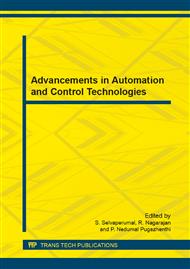p.447
p.453
p.459
p.465
p.471
p.477
p.483
p.489
p.495
Feature Based Active Contour Method for Automatic Detection of Breast Lesions Using Ultrasound Images
Abstract:
Breast cancer has been increasing over the past three decades. Early detection of breast cancer is crucial for an effective treatment. Mammography is used for early detection and screening. Especially for young women, mammography procedures may not be very comfortable. Ultrasound has been one of the most powerful techniques for imaging organs and soft tissue structure in the human body. It has been used for breast cancer detection because of its non-invasive, sensitive to dense breast, low positive rate and cheap cost. But due to the nature of ultrasound image, the image suffers from poor quality caused by speckle noise. These make the automatic segmentation and classification of interested lesion difficult. One of the frequently used segmentation method is active contour. If this initial contour of active contour method is selected outside the region of interest, final segmentation and classification would be definitely incorrect. So, mostly the initial contour is manually selected in order to avoid incorrect segmentation and classification. Here implementing a method which was able to locate the initial contour automatically within the multiple lesion regions by using the wavelet soft threshold speckle reduction method, statistical features of the lesion regions and neural network and also we are able to automatically segment the lesion regions properly. This will help the radiologist to identify the lesion boundary automatically.
Info:
Periodical:
Pages:
471-476
Citation:
Online since:
June 2014
Authors:
Keywords:
Price:
Сopyright:
© 2014 Trans Tech Publications Ltd. All Rights Reserved
Share:
Citation:


